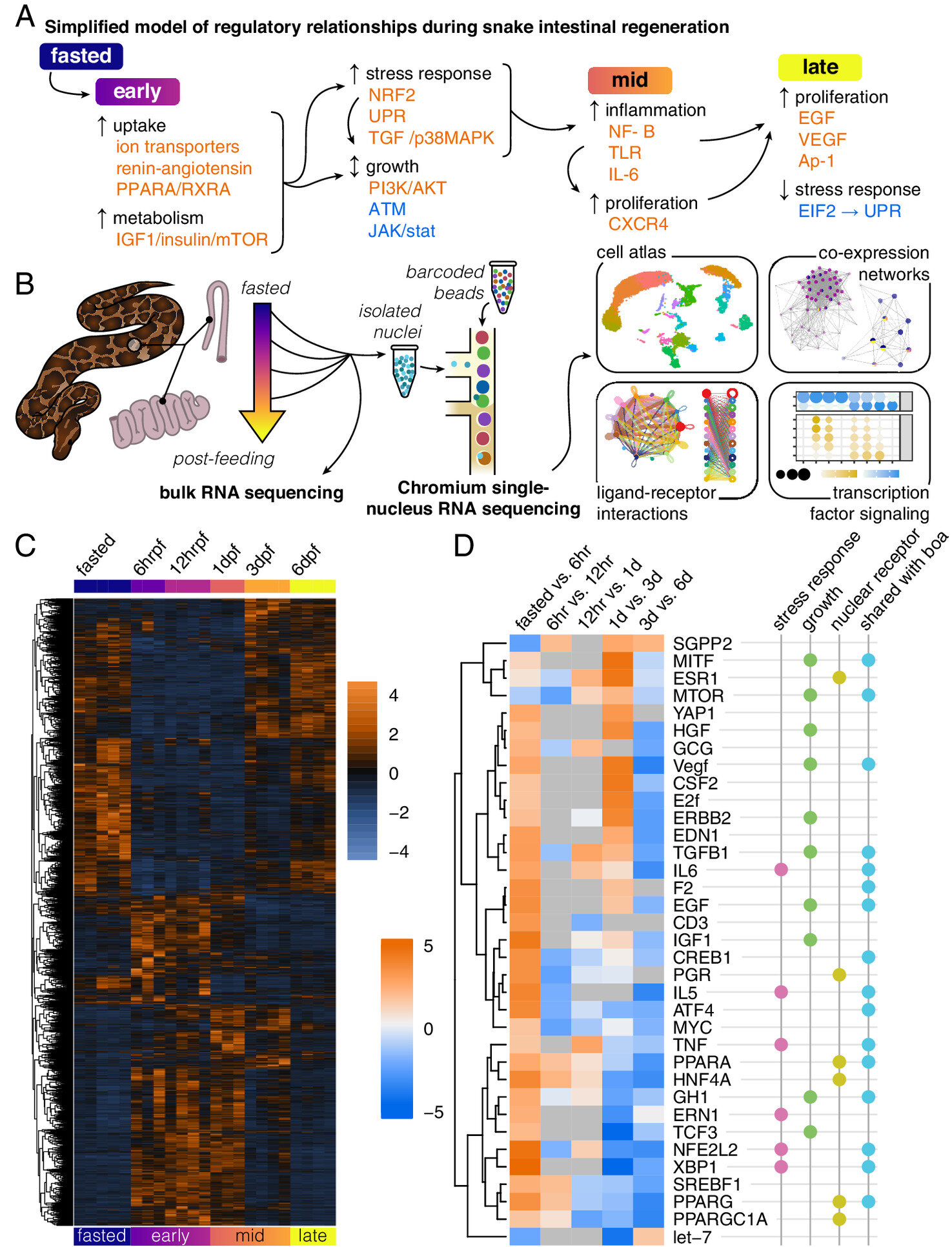All animals possess some capacity for repairing and replacing the lining of their intestines, a process called intestinal regeneration. In mammals, including humans, this constant but relatively minor turnover of cells helps the intestine keep up with the daily requirements of eating. It is accomplished by stem cells that originate in intestinal crypts—microscopic depressions in the intestinal wall.
In stark contrast, snakes that feed infrequently—such as boas and pythons who can go weeks without a meal—do not possess intestinal crypts, yet they undergo some of the most extreme examples of intestinal regeneration found in the animal kingdom. When these snakes fast for long periods, their intestines become atrophied, shrunken and almost entirely non-functional.
However, when they feed, their intestines undergo massive regenerative growth, more than doubling in mass in 48 hours and rebuilding much of the intestinal cells and structures required to digest and absorb food. This shift is also accompanied by huge changes in the snakes’ physiology and metabolism.


